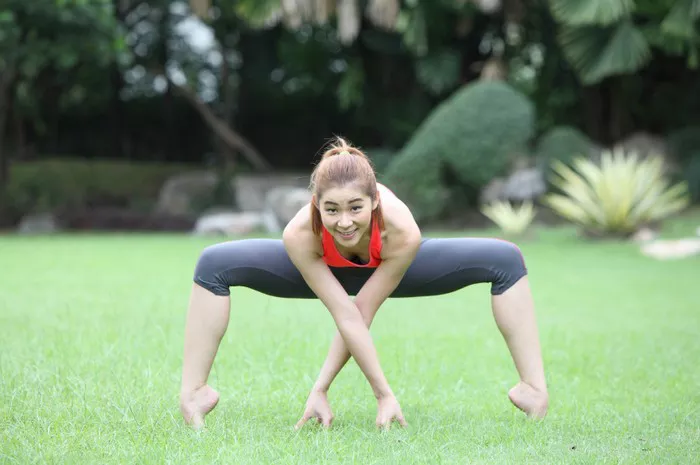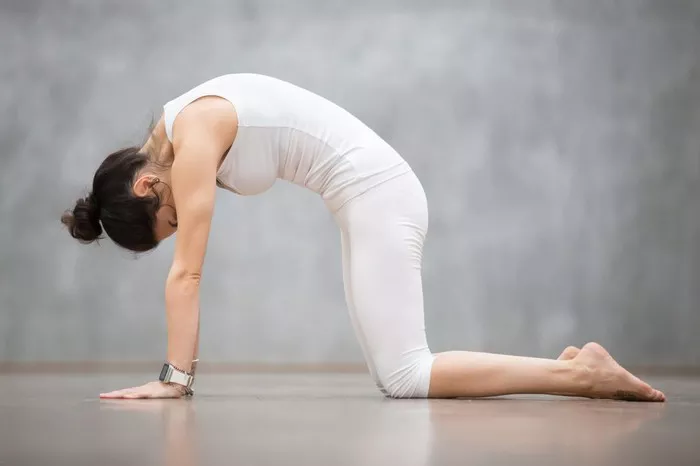Kriya Yoga is a profound and transformative system of yoga that holds a unique place in the vast landscape of spiritual practices. Known for its powerful techniques and emphasis on the control of breath, mind, and energy, Kriya Yoga has been a spiritual practice embraced by many over the centuries. But when exactly was Kriya Yoga created? The origins of this practice are deeply entwined with ancient yogic traditions, and understanding its creation requires a deeper look into its historical, philosophical, and spiritual roots.
In this article, we will explore the history of Kriya Yoga, its creation, development, and the important figures who have contributed to making it one of the most recognized systems of yoga in the modern world. We will also examine the key techniques of Kriya Yoga, its benefits, and why it has continued to thrive for thousands of years.
The Ancient Roots of Kriya Yoga
To understand when Kriya Yoga was created, we must first take a step back into the ancient traditions of yoga. Yoga, as a practice, dates back to thousands of years, with its roots deeply embedded in the spiritual and philosophical landscapes of ancient India. The earliest references to yoga can be traced back to the Rig Veda (circa 1500 BCE), one of the oldest sacred texts in human history. The Upanishads (circa 800 BCE), which followed the Vedas, provide even more in-depth insights into meditation, breath control, and the nature of the soul, laying the foundation for practices such as Kriya Yoga.
The word “Kriya” itself comes from the Sanskrit root “Kri,” which means “action” or “effort.” In the context of Kriya Yoga, “Kriya” refers to a specific set of spiritual practices that help an individual harness and channel their inner energy for self-realization and spiritual growth. These practices often involve a combination of breath control (pranayama), meditation, and physical postures (asanas), all of which are designed to awaken the dormant spiritual potential within a practitioner.
While the term “Kriya Yoga” as it is known today did not exist in the ancient texts, the core principles and practices associated with Kriya Yoga have ancient roots. The early yogic teachings, particularly in the Upanishads and later in the Yoga Sutras of Patanjali (circa 200 BCE), hint at the practices that would later evolve into the system of Kriya Yoga.
The Contribution of Patanjali and the Yoga Sutras
Patanjali, the author of the Yoga Sutras, is often regarded as one of the most important figures in the history of yoga. His text, the Yoga Sutras, outlines an eightfold path, known as the Ashtanga Yoga, which serves as a comprehensive guide for achieving spiritual liberation. The eight limbs of Patanjali’s system include ethical guidelines (Yamas and Niyamas), physical postures (Asanas), breath control (Pranayama), concentration (Dharana), meditation (Dhyana), and ultimately, Samadhi (a state of deep spiritual absorption).
Although Patanjali did not specifically use the term “Kriya Yoga,” his teachings on breath control (pranayama) and meditation laid a foundation for the development of Kriya Yoga techniques. The Yoga Sutras highlight the importance of controlling the breath and mind to achieve inner peace and self-realization—principles that are central to the practice of Kriya Yoga.
It is in the centuries following Patanjali’s time that the more specific techniques of Kriya Yoga began to be formally taught and passed down through spiritual lineages. These practices were often kept secret and reserved for advanced practitioners due to their potent effects on the body, mind, and spirit.
The Historical Development of Kriya Yoga
The term “Kriya Yoga” itself began to take shape in the medieval period of Indian history. While the precise date of its formal creation is difficult to pinpoint, Kriya Yoga, as we understand it today, is believed to have been systematized during the time of the great yogi and spiritual teacher, Paramahamsa Yogananda (1893-1952), who brought Kriya Yoga to the West.
However, the lineage of Kriya Yoga can be traced back much further than Yogananda’s time. One of the most important figures in the early development of Kriya Yoga was Lahiri Mahasaya (1828–1895), a 19th-century Indian yogi. Lahiri Mahasaya was instrumental in reviving and systematizing the practice of Kriya Yoga, which had been passed down in secret through the generations of yogic masters. He received direct teachings from his guru, Mahavatar Babaji, a legendary figure in the yogic tradition who is believed to be an immortal and divine being.
Mahavatar Babaji is often credited with reintroducing Kriya Yoga to the world after it had faded from common practice. Babaji’s teachings emphasized the importance of meditation and breath control, and he is said to have passed the practice on to his disciples, one of whom was Lahiri Mahasaya. Lahiri Mahasaya, in turn, became a revered teacher of Kriya Yoga and spread the practice to many of his followers, including Sri Yukteswar Giri, the guru of Paramahamsa Yogananda.
Paramahamsa Yogananda and the Global Spread of Kriya Yoga
While Kriya Yoga had existed for centuries, it was Paramahamsa Yogananda who is largely responsible for popularizing the practice on a global scale. In 1920, Yogananda traveled to the United States to attend the World Parliament of Religions in Chicago. During his time in the West, he made a significant impact by introducing the teachings of Kriya Yoga through his acclaimed book, Autobiography of a Yogi (1946). The book remains one of the most widely read spiritual classics in the world today.
Yogananda’s teachings emphasized the scientific approach to spirituality and the importance of meditation as a means to attain direct personal experience of God. He also shared practical methods for controlling the mind, body, and breath—core elements of the Kriya Yoga practice. His work not only spread the practice of Kriya Yoga across the globe but also helped bridge the gap between Eastern and Western spiritual traditions.
Through Yogananda’s influence, Kriya Yoga became widely accessible to practitioners in the West, and many spiritual seekers began adopting the practice as part of their spiritual journey. Yogananda also established the Self-Realization Fellowship in 1920, a spiritual organization dedicated to disseminating the teachings of Kriya Yoga and other spiritual practices to the world.
Kriya Yoga in the Modern Era
Today, Kriya Yoga continues to thrive, with thousands of practitioners around the world experiencing its transformative benefits. Its teachings are passed down through various lineages and organizations, including the Self-Realization Fellowship, the Kriya Yoga International, and the Kriya Yoga Institute, among others. The practice of Kriya Yoga has also been adapted to suit the needs of modern spiritual seekers, with online courses, retreats, and teachings making it accessible to people from all walks of life.
The practice itself has evolved and expanded over the years, but the core principles remain unchanged. Kriya Yoga focuses on the systematic control of the breath, concentration, and meditation to awaken higher states of consciousness. The ultimate goal of the practice is self-realization—the experience of oneness with the divine and the realization of one’s true nature.
Key Techniques and Benefits of Kriya Yoga
Kriya Yoga is known for its specific techniques that facilitate deep states of meditation and spiritual awakening. The practice includes a series of breathing exercises, concentration techniques, and mental exercises that are designed to purify the body and mind. One of the central techniques in Kriya Yoga is the practice of pranayama (breath control), which is used to regulate the flow of prana (life energy) within the body.
The key benefits of Kriya Yoga include:
Improved Mental Clarity: The practice of Kriya Yoga helps clear the mind, reduce stress, and promote mental clarity.
Physical Health: Through breath control and meditation, Kriya Yoga helps to balance the nervous system, improve circulation, and increase overall vitality.
Spiritual Awakening: Kriya Yoga is considered a direct path to spiritual enlightenment and self-realization. The techniques help the practitioner experience a deep connection with their higher self and the divine.
Emotional Balance: Kriya Yoga promotes emotional stability by calming the mind and releasing negative emotions.
Inner Peace: The practice leads to inner peace, joy, and a sense of contentment.
Conclusion
The creation of Kriya Yoga cannot be attributed to a single date or individual. Rather, it is the result of thousands of years of spiritual evolution and the teachings of many great yogis and sages. From its ancient roots in the Vedic and Upanishadic texts to its formalization by figures like Lahiri Mahasaya, Sri Yukteswar, and Paramahamsa Yogananda, Kriya Yoga has been passed down through the generations as a powerful tool for self-realization and spiritual growth.
While we may never know the exact moment when Kriya Yoga was “created,” it is clear that it is an ancient and timeless practice that continues to offer profound benefits to spiritual seekers around the world. Whether practiced in a traditional setting or adapted to suit modern life, Kriya Yoga remains one of the most effective methods for achieving inner peace, mental clarity, and spiritual enlightenment.
Related Topics:














